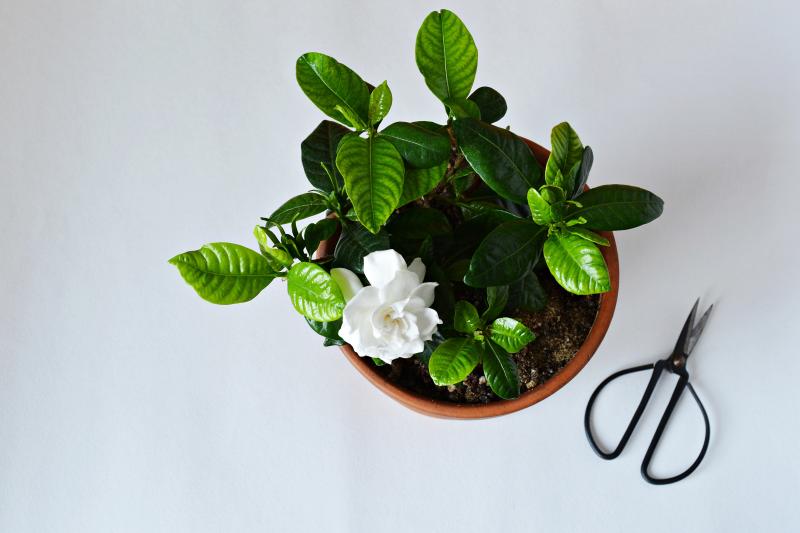Scents that soothed you as a child can continue to relieve anxiety and stress throughout all of your adulthood. Gardenias have one of the strongest-scented blooms, with creamy-white, waxy flowers that contrast beautifully against their sleek, leathery, deep-green leaves.
Gardenias are in the same plant family as coffee trees. Like coffee trees, gardenias bear fruit, and it can be used used as a natural dye for textiles.
One of the most frustrating things about these lovely, fragrant plants is how finicky they are. Indoor gardenias are so fussy that they do not like to be moved around. Give them a permanent home in a spot with at least half a day of direct sun. Keep the temperature steady at 64 F during the day and 55 F at night.
One of the biggest challenges in growing gardenias indoors is that they need relatively high humidity. This is especially important in the winter, when indoor heating systems dry out the air. One way to boost humidity is to cluster your houseplants close together and mist them daily with water during dry periods. Gardenias like a gentle mist early in the day. You can also place the potted plants on a saucer filled with gravel or pea pebbles, adding water as needed. As the water evaporates, it increases the humidity around the plant. Perhaps the easiest thing to do is place a humidifier near your plants.
Keep your gardenias away from drafts or heating vents. Water when the soil is dry to touch. Prune off all woody stems to encourage more blooms.
Gardenias need potting soil that is much more acidic than most other plants, with a pH between 4.5 and 6.0. Those growing in soil that is not acid enough will often develop chlorosis (yellowing leaves) and will not bloom. Luckily, there are potting soils developed especially for gardenias. Maintaining acid soil conditions in a pot requires more attention than gardenias growing outdoors in the ground. It is good to test soil pH and adjust if needed.
There are several gardenia pests, such as aphids, mealybugs and whiteflies, with aphids the most common. To get rid of them, spray both the tops and bottoms of the leaves with a mix of half water and half dish soap. You can also use neem oil. Be sure to remove all infected leaves and treat the whole plant with the oil. Yellowing leaves can also be caused by root nematodes, and unfortunately, there is no cure for that.
Gardenias appreciate fertilizer for the best growth and the most flowers. Feed potted gardenias three or four times a year with a water-soluble plant food such as 20-20-20. Do not apply extra fertilizer; this can cause salt buildup in the potting soil and lead to root dehydration.
Take the time to grow an indoor gardenia, and when you’re stressed, take a sniff of the perfume-like aroma and be transported back to the soothing days of your childhood.






















































